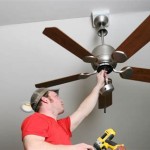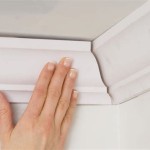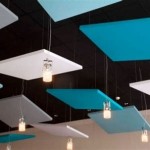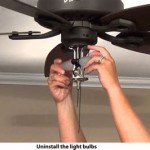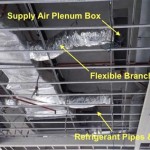Vaulted Ceiling Design 8211 An In-Depth Guide for Drill Integration
Vaulted ceilings, renowned for their aesthetic appeal and spatial enhancement, represent a significant undertaking in architectural design and structural engineering. Successfully integrating drilling operations into these structures requires a comprehensive understanding of the ceiling's geometry, material composition, and load-bearing capabilities. This guide aims to provide a detailed exploration of considerations and best practices when drilling into vaulted ceilings, ensuring both structural integrity and project success.
The inherent challenge lies in the curvature and often complex construction of vaulted ceilings. Unlike flat ceilings, where drilling locations can be easily referenced, vaulted surfaces demand precision and a thorough assessment of the underlying framework. Ignoring these factors can lead to structural compromise, aesthetic imperfections, and potentially dangerous situations.
Before any drilling commences, a detailed plan must be established. This plan should encompass a structural analysis, a consideration of the drilling purpose (e.g., lighting installation, HVAC ducting), and a selection of appropriate drilling equipment and techniques. The plan should also detail safety measures to mitigate any potential risks associated with working at heights and with potentially unstable structures.
Understanding Vaulted Ceiling Types and Construction
Vaulted ceilings are categorized based on their shape and construction method. Common types include barrel vaults, groin vaults, rib vaults, and cloister vaults. A barrel vault, the simplest form, is essentially a continuous arch. Groin vaults are formed by the intersection of two barrel vaults. Rib vaults are characterized by structural ribs that support the arched surface, and cloister vaults resemble a domed structure with flattened sides.
The construction materials also vary widely. Traditional vaulted ceilings may be constructed from stone, brick, or concrete. Modern vaulted ceilings, conversely, often utilize wood framing with drywall or plaster finishes. Some may even incorporate steel framing for added support. Understanding the materials used is essential for selecting the appropriate drill bits and drilling techniques.
The structural integrity of each type of vaulted ceiling depends on different principles of load distribution. Barrel vaults, for example, exert a significant outward thrust, requiring robust support at the walls. Rib vaults transfer weight along the ribs to specific load-bearing points. Therefore, drilling into different sections of a vaulted ceiling can have varying impacts on its overall stability.
Older vaulted ceilings, particularly those constructed from masonry, may contain hidden voids or inconsistencies. These irregularities can create unexpected challenges during drilling, potentially causing chipping, cracking, or even structural damage if not approached with caution. Careful investigation and a controlled drilling process are critical in such cases.
Pre-Drilling Assessment and Planning
The pre-drilling assessment is arguably the most crucial step in the process. It involves a thorough inspection of the ceiling's surface and, if possible, its internal structure. This assessment should identify the construction materials, the presence of any existing utilities (e.g., electrical wiring, plumbing), and the location of structural members.
Visual inspection, coupled with non-destructive testing methods such as ground-penetrating radar (GPR) or infrared thermography, can provide valuable insights into the ceiling's composition. GPR can detect hidden objects and voids within the structure, while infrared thermography can identify areas of moisture or insulation deficiencies.
A key aspect of pre-drilling planning is to determine the exact location for the drill hole. This should be based on a detailed architectural plan or a precise measurement of the desired installation point. It is also essential to consider the angle of the ceiling and the required drilling angle to ensure proper alignment and functionality.
The selection of the correct drill bit is paramount to achieving a clean, accurate hole without damaging the surrounding material. For masonry, carbide-tipped drill bits designed for concrete or stone are recommended. For wood framing, standard wood drill bits or hole saws may be suitable. For metal framing, drill bits specifically designed for metal drilling are necessary.
Furthermore, the drilling process should be planned to minimize vibrations and stress on the vaulted ceiling. Using a variable-speed drill and applying gentle pressure can help prevent cracking or chipping. It is also advisable to use a dust extraction system to remove debris and improve visibility during drilling.
Drilling Techniques and Safety Protocols
When drilling into a vaulted ceiling, safety should be the top priority. Working at heights requires appropriate safety equipment, including scaffolding, ladders, and safety harnesses. A designated spotter should be present to monitor the drilling process and provide assistance if needed.
Before initiating drilling, it is essential to identify and isolate any utilities that may be present in the area. Electrical circuits should be de-energized, and plumbing lines should be shut off to prevent accidental contact or damage.
For masonry vaulted ceilings, a pilot hole should be drilled first to guide the larger drill bit. This helps to prevent the drill bit from wandering and ensures accurate placement. It is also important to use a hammer drill with caution, as excessive vibration can damage the surrounding masonry.
When drilling through drywall or plaster finishes, a scoring technique can be used to prevent chipping or cracking. This involves using a utility knife to score the surface of the drywall or plaster around the drilling location before drilling. This creates a clean edge and minimizes the risk of damage.
After drilling, the hole should be carefully cleaned of any debris. If necessary, the hole can be filled with a suitable sealant or patching compound to prevent moisture intrusion or air leakage. For aesthetic purposes, the patching compound should be color-matched to the surrounding ceiling finish.
Regularly inspect the drill bit for wear and tear and replace it as needed. A dull drill bit can cause excessive heat and friction, potentially damaging the vaulted ceiling and increasing the risk of accidents.
Appropriate personal protective equipment (PPE) should be worn at all times, including safety glasses, gloves, and a dust mask. This helps to protect against flying debris, sharp edges, and airborne particles.
The drilling speed should be adjusted based on the type of material being drilled. Softer materials, such as wood, can be drilled at higher speeds, while harder materials, such as masonry, require slower speeds. Applying too much pressure or drilling too quickly can cause the drill bit to overheat or break.
Consider the implications of dust extraction. Proper dust extraction systems are key not only for the health and safety of the operator but also to prevent dust from settling on surrounding surfaces and potentially damaging delicate finishes.
By carefully considering these factors and implementing appropriate drilling techniques and safety protocols, it is possible to successfully integrate drilling operations into vaulted ceilings while preserving their structural integrity and aesthetic appeal.

Create Wood Beams For A Vaulted Ceiling Review By Woodsmith

Vaulted Ceiling Beams With Laminate Wood Jenna Sue Design

Shiplap Ceiling Design Above

Vaulted Ceiling Beams With Laminate Wood Jenna Sue Design

Vaulted Ceiling Beams With Laminate Wood Jenna Sue Design

Epic Cathedral Ceiling Design Ideas

Vaulted Ceiling Beams With Laminate Wood Jenna Sue Design

Vaulted Ceilings Ideas That Take Rooms To New Heights Architectural Digest

How To Bid Painting A Complex Ceiling

Vaulted Ceiling Beams With Laminate Wood Jenna Sue Design
Related Posts

